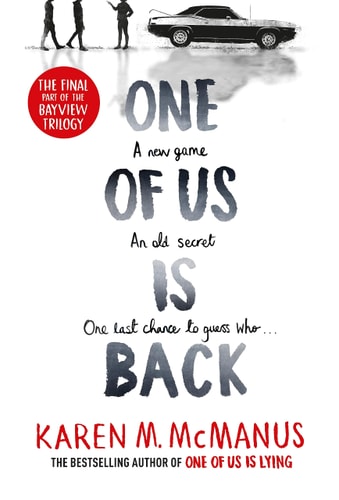Millions of Books, Authors and Publishers to discover. Explore now.




















One Sentence-Summary: Rich Dad Poor Dad tells the story of a boy with two fathers, one rich, one poor, to help you develop the mindset and financial knowledge you need to build a life of wealth and freedom. Favorite quote from the author: “The main reason that over 90 percent of the American public struggles financially is because they play not to lose.” Rich Dad Poor Dad is a modern classic of personal finance and favorite finance book of all time. Although the book is controversial and often takes criticism, people still believe it’s worth reading. Otherwise, it wouldn’t have sold over 32 million copies. Robert Kiyosaki tells the story of his two Dad’s in his childhood. His own father and the father of his best friend. While he speaks affectionately of both, they were very different when it came to dealing with finances. Rich Dad Poor Dad Summary Many of us are too afraid of being branded as a weirdo, in order to exit the rat race . We let the two main emotions everyone has around money dominate our decisions: fear and greed. That’s why we still stick to the outdated mantra “Go to school, go to college, get a job, play it safe.” when in reality no job is safe any more . For example, when you get a raise at your job, a wise choice would be to invest the extra money. Put it into something that builds wealth like stocks or bonds, which has risk, but a lot of potential. Maybe you find a good fund with a 60% chance to double your money within a year, but a 40% chance of losing it all. However, most likely your fear of losing the money altogether will keep you from doing so. But when your greed takes over, you might then spend the extra money on an improved lifestyle. You might buy a fancy new car, and the payments eat up the money, for instance. This way you’re almost certain to lose 100%. This already gives you a glimpse of how important it is to educate yourself financially. Since we receive no financial education in school or college, sadly, this is entirely up to you. Look around and you’ll see plenty of financially ignorant people in your own life. Just take a look at local politicians. Is their city in debt? Your mayor might be great, but unfortunately, he probably doesn’t know how to deal with money. For the same reason 38% of Americans don’t save anything for their retirement. The only way for you to counteract this is to start now. Today is the youngest you’ll ever be, so take a close look at what you can and can’t afford. This way you’ll be able to set realistic financial goals, even if it means waiting for that shiny new BMW. Next, adopt the mindset of “work to learn” instead of “work to earn”. Take a job in a field you have no clue about, such as sales, customer service or communications, to develop new skills – you never know what they might be good for . Set aside 5% of your income each month to buy books, courses and attend seminars on personal finance to start building your financial IQ. The first step toward building wealth lies in the mindset of managing risks instead of avoiding them. Also, learn about investments to understand that it’s better to not play it safe because you’ll miss big potential rewards. Don’t start big, just set aside a small amount, like $1,000 or even $100, and invest it in stocks, bonds, or even tax lien certificates . Treat the money as if it’s gone forever and you’ll worry less about losing it. As soon as you start your journey towards wealth, you’ll realize that it’ll be quite a long one. That’s why it’s important to stay motivated. Kiyosaki suggests creating an “I want” and an “I don’t want” list. Include items like: “I want to retire at age 50.” or “I don’t want to end up like my broke uncle.” Another idea is to pay yourself first each month. Take the portion of your salary you want to spend on stocks or your financial education, invest it, and pay your bills afterward. It’ll create pressure to be creative in making money and show you what you can afford. Use your money to acquire assets instead of liabilities. Assets are stocks, bonds, real estate that you rent out, royalties (for example from music ) and anything that generates money and increases in value over time. Liabilities can be cars with monthly payments, a house with a mortgage, and of course debt. Anything that takes money out of your pocket each month is a liability. There’s no rush. Just stay at your full time job and “mind your own business”. In this case, your job is what pays the bills and your business is what makes you wealthy. Build your business on the side and use it to invest in assets until your assets eventually become the main source of your income. You can even file a corporation to be taxed only after you’ve earned and invested, instead of being taxed before investing as an employee and trying to live off what’s left. The most important thing is that you start today. You are your own biggest asset, so the first thing you should put some money into is yourself.
For Book DetailOne Sentence-Summary: Deep Work proposes that we have lost our ability to focus deeply and immerse ourselves in a complex task, showing you how to cultivate this skill again and focus more than ever before with four simple rules. Favorite quote from the author: “If you don’t produce, you won’t thrive, no matter how skilled or talented you are.” Deep Work suggests that being able to completely immerse yourself in a complex task is a rare, valuable and meaningful skill. The second part of the book then outlines four rules you can use to cultivate a deep work ethic. Here are 3 lessons from Deep Work to help you go from busy to brilliant: 1. There are four strategies for deep work, all of which require intention. 2. Productive meditation can help you work deeper, even while you’re taking a break. 3. Stop working at the same time each day. Deep Work Summary Lesson 1: Use one of these four deep work strategies, but be intentional about it. Cal Newport isn’t one of those “one-size-fits-all-advice” kind of people. He knows that different things will work for different people, so when making his case for deep work he suggests four different strategies: 1. The monastic approach. Monastic comes from monastery – the place where monks live. It means shutting yourself off completely, for example by moving to a cabin in the woods to write a novel, and not come back until it’s finished. 2. The bimodal approach. This prioritizes deep work above everything else. You could set a 4-6 hour block each day for deep work, for example, where you lock yourself in your office, similar to the monastic approach. However, once that block is over, you’re free to do everything else that might be on your plate. 3. The rhythmic approach. This chunks down your work into time blocks, similar to the Pomodoro technique , and uses a calendar to track your progress. For example you’d plan your week ahead of time and put 10 blocks of 90 minutes on your calendar, and make working with timed blocks a habit. 4. The journalistic approach. If you have a busy daily routine, this works well. What you do is to simply dedicate any, unexpected free time to deep work. Being intentional about your deep work approach requires monitoring how you spend your time, so one of your first steps in making this decision should be to track your habits . You’ll quickly be able to separate productive from unproductive time and spot patterns. Lesson 2: Make the most of unproductive time with productive meditation. This is an idea that Cal Newport calls it productive meditation, and it comes down to using your “unproductive” time to do deep thinking. For example, if you’re taking the subway to work each morning, and know you have 30 minutes to and from work, in which you can’t do much else, use this time to try solving a complex problem in your mind. Commuting, showering, household chores, buying groceries and taking a walk (with or without your dog) are all great opportunities to think. The next time you have some “down time”, in which you do menial tasks, latch on to a big problem, try to see sub-problems of it, break it down and solve it. Lesson 3: Quit work at the same time each day, and stick to it. Cal has a habit of ending his work day at 5:30 PM, every day. No emails, no internet, no to-do lists, no computer after that. He describes his practice in this 7-year old blog post , and while his systems evolve, planning both work and free time have remained a constant factor. Your brain needs some space each night to wind down, and it won’t get that if you have an as- much-as-possible work ethic. Limit yourself by quitting work and not checking email, or, even better, shutting down your computer, at the same time each day. This way, you’ll have a fixed slot of free time every day to recuperate. Your mind will keep working below the surface , but you won’t burn yourself out by working around the clock.
For Book DetailThe 48 Laws Of Power One Sentence-Summary: The 48 Laws Of Power draws on many of history’s most famous power quarrels to show you what power looks like, how you can get it, what to do to defend yourself against the power of others and, most importantly, how to use it well and keep it. Favorite quote from the author: “Powerfull people impress and intimidate by saying less. The more you say, the more likely you are to say something foolish.” Even though Mastery is a great book, it’s not the one that put Robert Greene on the map. The 48 Laws Of Power was. Published in 1998 after taking a big risk, due to quitting his former job, which he hated, the book became a bestseller and has now sold over a million copies. It’s especially popular with rappers and hip-hop artists, but many celebrities quote from the book and mention the laws’ influence on their life. 50 Cent is just one of them, with whom Greene ended up collaborating on another book. Most of the 48 laws draw on a specific situation from history, and even though some of them seem to contradict one another, there’s a precious lesson to be learned from every single one. Here are 3 lessons about power to help you understand it better: 1. Always make superiors look smarter than you. 2. Confuse competitors by acting unpredictably. 3. Don’t force others to do what you want, seduce them instead. Lesson 1: Always make superiors look smarter than you. Here’s one surefire way how to not get promoted: When your boss comes across a problem she can’t solve on her computer, go to her, and, as you fix it, say: “Seeeeee? That’s how you do it. No problem, I’m happy to help!” The one thing people in a position of power don’t want is to look powerless . But when you flaunt your skills right in front of them, that’s exactly what happens. The French minister of finance under King Louis XIV, Nicolas Fouquet, paid for that lesson with a life in prison. When he threw an excessive party at his chateau in favor of the king, the king accused him of stealing, for no one man could legally be that wealthy, and threw him into prison. So instead of showing off how good you are, make your boss look like she’s the smartest person in the room, even if you know she isn’t. Give away credit and you’ll be given responsibility in return. For example, when Galileo Galilei discovered the four moons of Jupiter, he could’ve taken all that credit. Instead, he named them after the Grand Duke, Cosimo II de’ Medici, and his brothers. As a result Cosimo appointed him as his official philosopher and mathematician, securing Galileo’s funding for his research for years to come. Lesson 2: Make errors on purpose to confuse your competition. Sometimes the competition seems to always be one step ahead of you. That’s likely because they’ve invested time and energy into researching you and finding out your behavior patterns. When that happens, your best move is to act unpredictably. Do the opposite of what you think people expect, make a mistake on purpose, or just disappear for a while. Erroneous behavior throws people off their analysis game, and while they’re busy trying to figure out your new pattern and explaining your behavior, you have the chance to strike back. This is one of the first lessons good poker players learn. If you only play hands when you’ve hit at least a pair or above, the other players will quickly be on to you and fold every time you bet. But throw in a bluff or two, which you commit to and ride out, even if you end up losing those hands, and your opponents can’t be so sure anymore. Bobby Fischer used this exact strategy to confuse Boris Spassky in their match for the 1972 world championship title in chess. He made a beginner’s mistake in their first game, didn’t even show up for the second one (and lose by forfeit, and returned only minutes before the third game started. Then he started making crazy demands, like moving cameras, switching rooms and exchanging chairs. Finally, he played openings completely atypical to his usual chess style, and eventually beat Spassky to become world champion. Lesson 3: Seduce others into voluntarily doing what you want them to, instead of forcing them. Even when you’re in a position of power already, people won’t always do what you want them to. When that’s the case, you should never resort to trying to force people to obey. Instead, make it impossible for them not to do what you’d like them to by seducing them. Chuko Liang, head military strategist of ancient China used this to break his enemy, King Menghuo. Rather than destroying their entire army, when they attacked China, he captured them all, and then …served King Menghuo great wine and food. His soldiers saw this generosity, and after Liang was sure he had baffled them, he released them but kept King Menghuo hostage. Only after threatening that he’d have to bow to the Chinese king if he was captured again, did he release the enemy. Over the years, Liang did capture Menghuo time and time again, each time making the same threat, yet always releasing his prisoner. After the seventh time, Menghuo surrendered, bowed to the king and gave up on his own accord. Raw force only breeds resentment, so use seduction instead.
For Book DetailThe Subtle Art Of Not Giving A F*ck One Sentence-Summary: The Subtle Art Of Not Giving A F*ck does away with the positive psychology craze to instead give you a Stoic life that might not always be happy, but meaningful and centered only around what’s important to you. Favorite quote from the author: “Who you are is defined by what you’re willing to struggle for.” The Subtle Art Of Not Giving A F*ck , Mark Manson’s first “proper” book, this instant New York Times bestseller is a no BS self-help book for people who usually hate self-help. Mark Manson gets that life has become overwhelming and the only way to find our center around the things that really matter to us is to not give a f*ck about anything else. Here are 3 favorite lessons: 1. Values you can’t control are bad values to follow. 2. Don’t believe you know anything with certainty, for it keeps you from improving. 3. Trying to leave a legacy might ruin your life. The trick of not giving a fuck about most things is that you’ll be able to give one about what really matters to you. The Subtle Art Of Not Giving A F*ck Summary Lesson 1: Only hold values you control. Mark is a very Stoic guy and it shines through his writing and advice. A common idea in Stoicism is to focus only on the things you can control . This is easy enough to understand and implement when it comes to your actions, but it can be applied to more intangible aspects of your life as well. Take your values, for example. I know it’s hard to put them into words, but if you try to describe yourself in, say, three adjectives, you already have a good idea of which values most dictate your life. Let’s say you chose the words honest, punctual and popular. Here’s where Mark makes an interesting remark: Only choose to have values you can control. Most of us give up some of our ideals as we grow up, try to have a career and make money. While that’s just part of real life, it’s important you don’t hand off the steering wheel altogether. Values you don’t control are bad, because they’ll be a constant source of unnecessary suffering in your life. When we look at the three we just mentioned, honesty is 100% in your control. Only you know how honest you are, but no one else needs to. Punctuality is partially in your control. If you always leave with plenty of buffer time, you can compensate for most potential obstacles. Popularity, however, is totally out of your grasp. Sure, you can be nice and friendly to everyone, but you can’t control other peoples’ opinions. Some will always hate you, no matter what you do . Therefore, popularity isn’t the best value to focus on and you could try replacing it with one more controllable, such as kindness. Lesson 2: Certainty hampers growth. What a great principle distilled into just three words: certainty hampers growth. Imagine you could choose between two modes of moving through the world: one in which you think everything you know is 100% true and one in which you think nothing you know is 100% true. Both are stressful, but which one do you think would help you make better decisions? The latter, of course. While there’s some middle ground to be found here, rejecting the idea that you know anything for sure is a great base to start learning from. This is true for discovering factual knowledge , such as using the scientific method to build business hypotheses helps arrive at better conclusions, but it is also true for gaining conceptual knowledge . The second kind is more implicit knowledge about the relationships between various entities. Let’s take your place in the social hierarchy at school, for example. If you’re convinced you’re ugly, you’ll be sad a lot. But if you notice that you get lots of compliments at school, people call you charming and some have a crush on you, that’s evidence your brain is playing you with false certainty. If you allow yourself to have a little doubt, you can then disprove this limiting belief you hold about yourself. Lesson 3: Don’t obsess about leaving a legacy. Here’s an uncomfortable, but important reminder: You’re going to die one day. We all are. Whether we admit it or not, when the time comes closer, we’re all scared. That’s why many of us want to leave a legacy , myself included. However, Mark says that might ruin our short amount of precious time here on earth. The more we’re driven to build a great body of work, the more start chasing fame, working too much and focusing on the future. What if instead, we just tried to be useful in the present? We could still help a ton of people, enjoy our days and fully be here, while we’re here. Mark’s stance is clear: Find ways to bring yourself, your loved ones and the people you meet joy in the now and let the legacy part take care of itself.
For Book Detail










